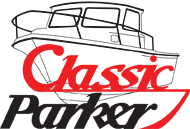We travel slow and everyone is on watch and listening, too. Talking is limited. Windows may or may not be open depending on the pilot, wind, moon, lightning, rain, fog, etc. Fixed and handheld VHF radios on. I worry about collisions and have PLB , handheld electronic SOS flare, and ditch bag. Try to turn off anything we can or cover with some thing. Towels or paper towels ready for cleaning. Dont have a hailer just handheld honker. Topside horn is shot and need to be replaced. Handheld flashlights or spot light ready. We dont travel much at night but running lights are on and seen many idiots traveling without lights or anchored without lights, some are have fun and no problem to me or water is full of gazillion crab traps. We dont have radar. AIS and special lights in cockpit. Sad.
We need a total update. chart plotter, radio, high end 8' antenna, AIS, radar, autopliot, another PLB and a a billion candlepower spot light! LOL
Alas it is always something with an old boat


































